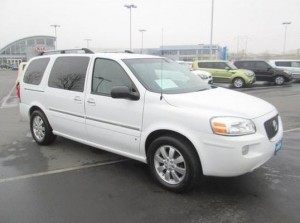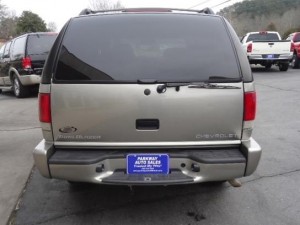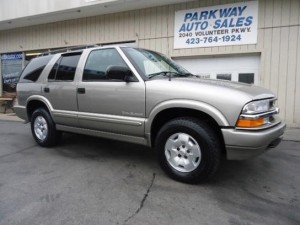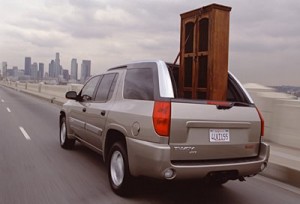GM Bad Idea: Buick Terraza
Posted by Doug DeMuro in GM Bad Idea on | 10 comments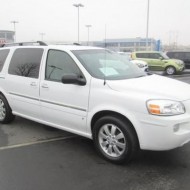
Ah, the world of minivans. A world that General Motors has tried, unsuccessfully, to enter since the dawn of time: first, with a van shaped like a dustbuster, then with one that could tow stuff. Both vans found a following, though in each case it was comprised of around 900 people that qualified for the GM Friends and Family discount.
Admittedly, GM did make a decent van – the Venture and companions – for a few years in the late 1990s. Of course, it was laughably outclassed by Honda and Toyota immediately after its release, which allowed GM to do what they do best: let it remain on the market almost completely unchanged for five more years.
Which brings us to today’s GM Bad Idea: the Buick Terraza.
After the Venture and companions were no longer good enough to take on rivals, GM finally changed its minivan lineup. The result was five vans: the Chevrolet Uplander, the Buick Terraza, the Pontiac Montana SV6 and the Saturn Relay. The intent was to offer minivan practicality with “SUV styling,” which would’ve been fine – except no one in their right mind believed it looked like an SUV. Instead, they were just ugly.
The Terraza was the very worst simply because of its price point: an upscale CXL model with all-wheel drive started at $34,000. That was more than the newly-redesigned Honda Odyssey in top-level EX trim with leather and a rear-seat DVD player.
Worse, options could bring the Terraza’s price to around $40,000 – though GM’s bottomless incentive budget means we can be sure one never left the dealer at that price. And most of the buyers were probably using GM’s Friends and Family discount anyway.
GM Bad Idea: Chevy S-10 TrailBlazer
Posted by Doug DeMuro in GM Bad Idea on | 5 comments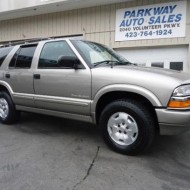
When the second-gen S10 Blazer came out in 1995, it was a pretty decent car. For a couple of years. Then competitors started coming out with much better cars, like the second-generation Explorer, the ’96 Pathfinder and the refreshed ’97 Jeep Cherokee.
As is customary, the arrival of better vehicles didn’t deter GM, and they continued to sell the ’95 Blazer virtually unchanged for years. Actually, that’s not entirely true. In 1998, to comply with federal regulations put in place four years earlier, the Blazer got a passenger airbag. Unfortunately, there were never any regulations on panel gaps, so the Blazer used GM’s typical rule of “one inch between everything.”
As we entered the new millennium, the Blazer sorely needed a redesign. Ford came out with a new Explorer in the spring of 2001. The Cherokee became the Liberty around the same time. The Toyota Highlander was out in 2000, and Honda was readying an SUV.
Unfortunately, GM wasn’t ready to debut a new Blazer. But, somewhere in the hallowed halls of the Renaissance Center, a mid-level product planner had an idea. Let’s keep selling the current car but give it the same name as the new car!
And so that’s what they did.
Beginning in 2000, you could buy the Blazer or the TrailBlazer. Both were, in fact, the same exact vehicle. The actual Chevrolet TrailBlazer, which was an entirely different vehicle, was still more than a year away. Of course, when it finally did arrive, the confusion started. Since we’re talking GM, the old TrailBlazer was vastly overproduced, so dealer lots were still full of them when the new TrailBlazer started showing up.
Imagine being a Chevrolet salesman in 2001: you have two models, both called TrailBlazer. One is new and hot; the other is old and crappy. Fortunately, we can be sure GM’s highly scrupulous dealer body would never try to talk a little old lady into the old TrailBlazer by telling her it’s the new one.
Here’s the real kicker: although Chevrolet ditched the S-10 Blazer’s TrailBlazer trim by 2002, the old Blazer stayed around until 2005. Yes, there are 2005 model S-10 Blazers out there. And some of them even have anti-lock brakes.
GMC Envoy XUV: GM Bad Idea
Posted by Doug DeMuro in GM Bad Idea on | 4 comments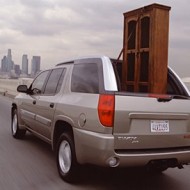
In the late 1990s and early 2000s, General Motors did a lot of weird shit. Looking back, it’s almost as if they were releasing as many strange vehicles as possible just to play chicken with financial insolvency. Everyone remembers the heinous Pontiac Aztek and the Chevy SSR convertible pickup. But few recall when GM hit its real low point: the 2004 GMC Envoy XUV.
The Envoy XUV was born during the unfortunate period when pickup-SUV combos were “in.” Years from now, historians will uncover a picture of a Chevy Avalanche and consider this a low point in American history, exceeded only by the Trail of Tears. Or that time Jimmy Carter was attacked by a swamp rabbit.
But while the Avalanche at least had cool styling, the Envoy XUV looked like a normal Envoy wearing a backpack. It had a retractable roof over what should’ve been its cargo area, which let drivers carry tall objects normally restricted by an SUV’s ceiling. But the rest of the XUV’s roof was fixed, so the objects couldn’t be very long. The price premium? $2,700.
Researching this post, I ran across a period piece from USA Today in which GM pegged the XUV’s volume target at around one-third of Envoy sales, or “around 30,000 units annually.” Of course, the actual figures were much lower: nine grandfather clock salesmen bought them, as did three people who routinely haul saplings.
The rest of GM’s buyers stayed away in what journalists are required to call “droves.” Interestingly, that word is something of an Envoy XUV theme, as it describes both how the XUV stacked up on dealer lots and the mass firings that must’ve taken place at GM for the vehicle ever reaching production at all.
By 2006, the Envoy XUV was gone. Only two years later, GM finally lost its game of chicken with financial insolvency, confirming what most of us knew all along: it was losing money. In droves.
